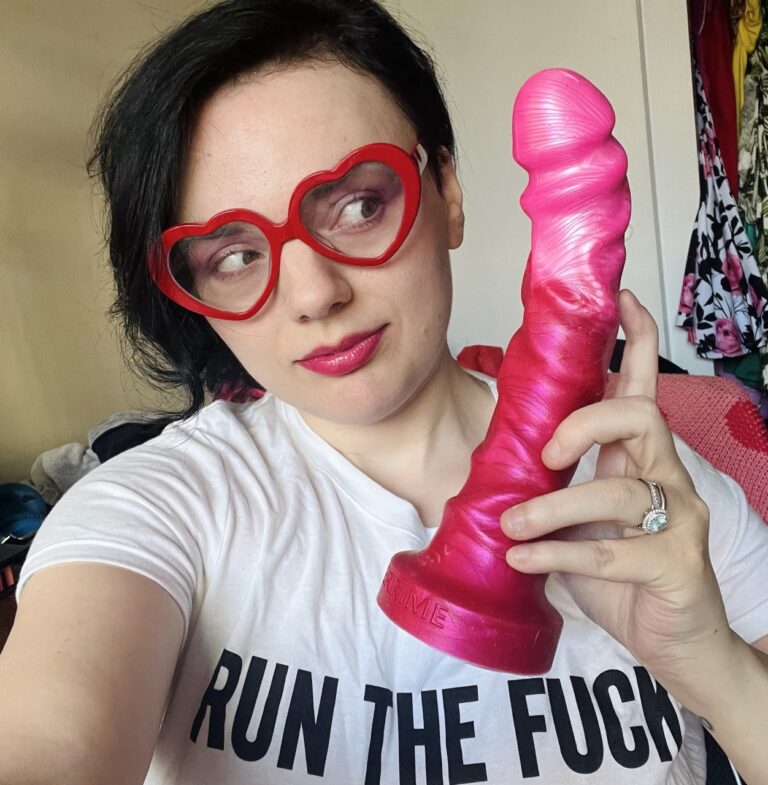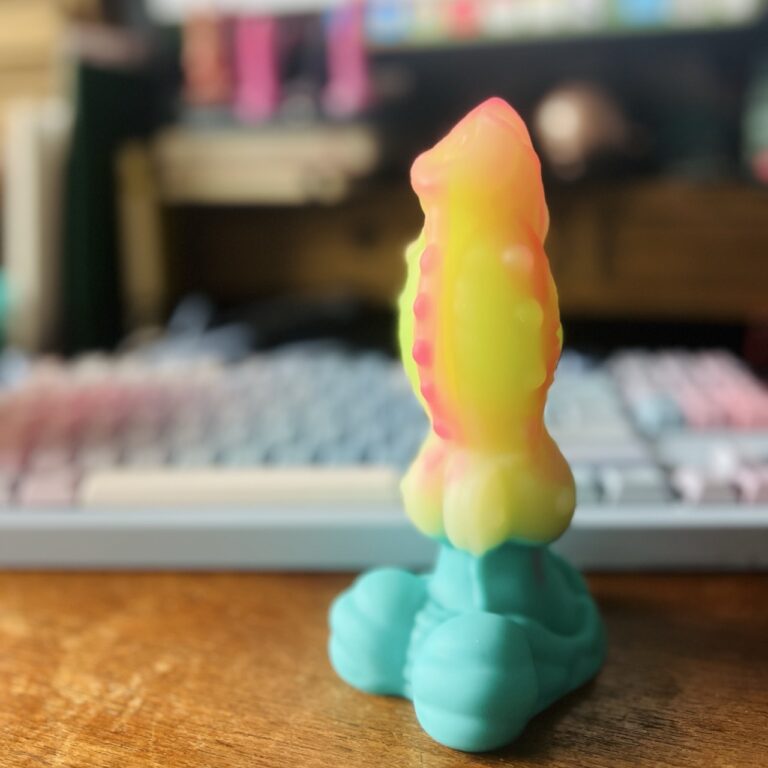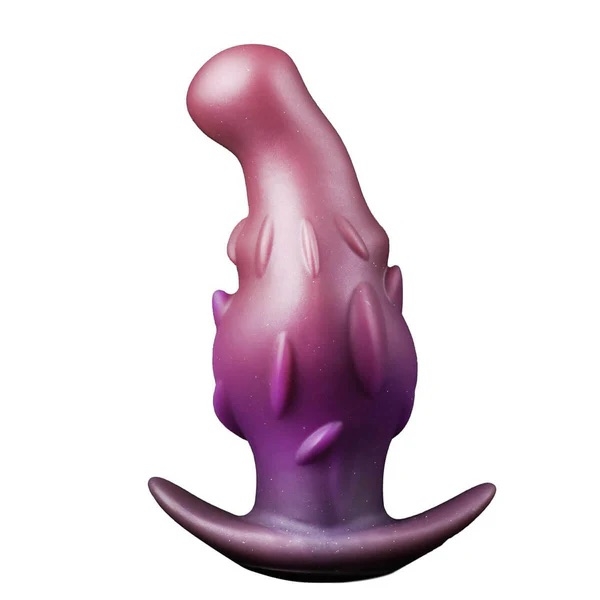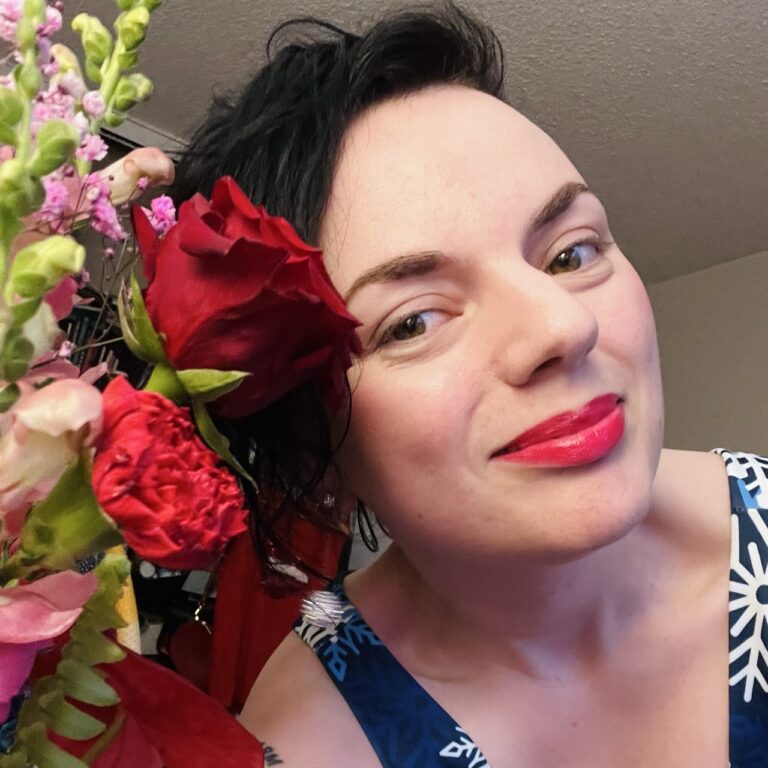
Going on first dates in my twenties was always a crapshoot in many ways. Would my date look like their photo, ask me a single question about myself, or put effort into making me come? There was no way to know in advance. Like all of us who engage in the weird and wondrous ritual that is modern dating, I just had to trust the process and hope for the best.
Or so I thought.
See, over the years, as I’ve gotten more involved with kinky and queer communities, I’ve learned a lot more about “vetting” new partners. Sometimes this happens in very overt ways, like when you ask a hot stranger at the dungeon to tell you about their safewords and other consent practices before agreeing to play with them. But vetting can also happen more subtly, as a way of ascertaining information that can establish compatibility and may even keep you safe – like “Has this person even heard of the concept of polyamory?” or “Is this person going to do/say something bigoted if I come out to them as bi?”
Polyamory, queerness, and kink are all topics I try to “vet” new potential partners’ stances on, because anyone who plans to date or fuck me will need to have at least a working knowledge of these things – and likewise, I love sex toys (as the 13+ years of sex toy reviews on this blog can attest!) and only want to have sex with people who are similarly enthusiastic about them, or are, at the very least, chill as hell about them.
If you, too, view toy-positivity as a vital trait in your potential paramours, here are some pro tips that just might help you suss out your crush’s views on sex toys. (Frankly, many of these tips could also be used to vet for kinkiness, among other things!)
Bring up a news story
If you don’t follow the sex toy beat as obsessively as I do (and why would you?), you might not know that sex toys are in the news pretty much every day. Even just scrolling up through my recent text chain with my dad (who follows a lot of news sources and often sends me sex toy-related things when he sees them), I see a story about a domestic boom in China’s sex toy industry, one about a malfunctioning sex toy causing a house fire in Staten Island, an article in which an ER doctor warned against the usage of urethral sounds, and one about a thrift store that accidentally put some metal butt plugs out for sale labeled as doorknobs.
There’s not always an easy or natural way to bring up a news story, but you can pretend to come across it on your phone while you’re with your crush and watch their reaction when you tell them about it – or you can do what I do, as an unabashed news nerd, and simply launch into a speech like, “I was just reading this news story about a case of vibrators that fell off a cargo ship… Isn’t that so tragic? I feel bad for the people who don’t get to have their vibrators now!” Watch for any microexpressions or protestations that give them away as being vibe-phobic!
Bring up a past memory
Tread carefully with this one, because some people are not gonna want to hear a sex story about your ex… but I’ve occasionally gotten good mileage out of casually telling an anecdote that is instructive about what not to do, e.g. “One time I hooked up with this guy who said that me using a vibrator during sex was ‘weird,’ and that made me so mad that I never fucked him again!” (Naturally, as with any anecdote that could be deemed inappropriate or sensitive, you gotta pick your moments to bring up this kind of thing. I’d only tend to tell a story like this if our conversation had already veered in a sexual direction.)
That being said, positive (or even neutral) anecdotes about sex toys can be instructive too. For instance, I remember once telling a crush a story about the time a security guard at a music venue found a dildo in my bag as I was trying to get into a rock concert. The dildo itself, and my reasons for having it, aren’t what the story is about, exactly – it’s about the awkward-but-funny interaction I had with the security guard over it – but if a person was uncomfortable with dildos, that would likely be evident in their reaction (or pointedly blank non-reaction, as the case may be!).
Bring up (or queue up) a media reference
Look, who even cares that the rabbit vibrator episode of Sex & the City aired a whopping 27 years ago?! You can still be like, “Ooh, wanna watch an episode of one of my favorite shows with me?” and then just ‘happen’ to choose the episode where Charlotte uses a rabbit vibe. Or the one where Samantha uses a wand vibe. Or the… other one where Samantha uses a different wand vibe. (I know too much about the history of wand vibes, evidently…)
There are, of course, plenty of other media depictions of sex toys, from the strap-on in Broad City to the sex doll in Lars & the Real Girl to the butt plug-shaped trophy in Everything Everywhere All At Once. While a person may not come right out and say “I disapprove of what is being portrayed!” their reaction may still give you some useful data to add to the pile.
Walk past (or into) a sex shop
Say you’re out on a date, and en route from dinner to a nightcap, you happen to stroll past a sex shop. You could comment with curious wonder (or experienced approval) on whatever you see in the window, could take the opportunity to tell a toy-related anecdote (see above), or could even flash your crush an impish smile and say, “Wanna go in?”
I often find it amazingly informative – not to mention hot – to wander through a sex shop with someone I’m newly interested in. There are so many conversation-sparking comments and questions you can spout about anything and everything that you see around you: “Ooh, I love this one!” “Have you ever tried this kind of thing?” “OMG, I’ve always wondered what these feel like.” “Does this intrigue you at all?” “Wow, that’s beautiful.” “What’s the most you would ever spend on a sex toy?” “I remember the first time I went into a sex shop…” “I wonder if this place is hiring!” However they respond to any of this, it will be very telling.
It’s also telling to observe which items in the store catch their eye – what do they go up to and stare at, what do they ask questions about, what toy packaging or lube labels do they scrutinize? Use your best judgment to decide when it’s appropriate to comment on this kind of stuff; I probably wouldn’t go up to a crush who was eying the enemas and say, “Thinking about cleaning your butt out, huh?” for instance, because being in a sex shop at all is vulnerable enough for most people as-is, without some well-meaning sex-positive scamp narrating your idle musings aloud!
Just fuckin’ ask
You really gotta read the room on this one, and hopefully you’ve established enough rapport that this doesn’t come across as unhingedly out-of-touch, but sometimes you can really just say something like, “What are your views on sex toys? I love them and have a bunch of them.”
With personal questions like this, I often recommend that you answer the question yourself upfront, as in that example. It’s a good-faith demonstration that you’re asking them to step out on a limb that you yourself will also willingly step onto. It’s also an opportunity to set the tone for what kind of answer you’re expecting, so that hopefully, even if they have an objection of some kind, they will voice it calmly and non-judgmentally.
As with all of these suggestions, it’s important to remember: If it does turn out that your crush has beef with sex toys, it’s good to know that ASAP, so you can make decisions accordingly, ideally before putting a label on things, developing a strong emotional attachment, or falling in love. You deserve pleasure, and you deserve to be partnered with people who care about your pleasure, instead of being suspicious or resentful of it – and so it is absolutely valid to want to filter out the vibrator-haters however and whenever you can.
How do you like to vet new partners for their chillness with regards to sex toys?
This post contains sponsored links. As always, all writing and opinions are my own.





